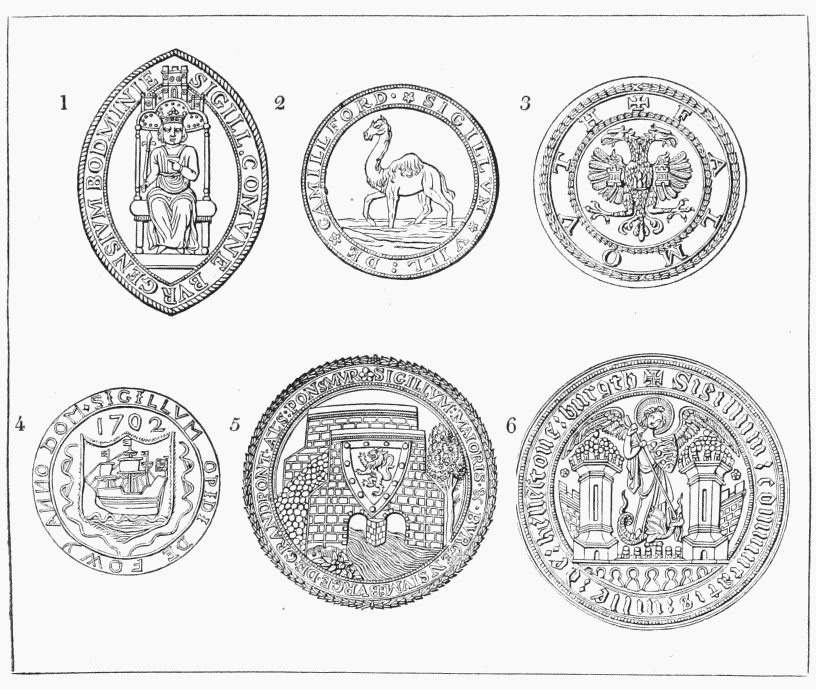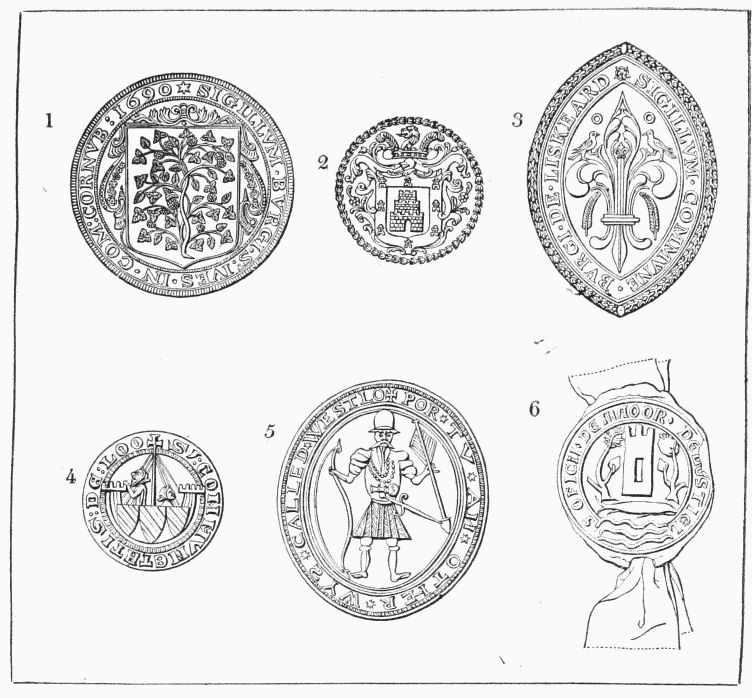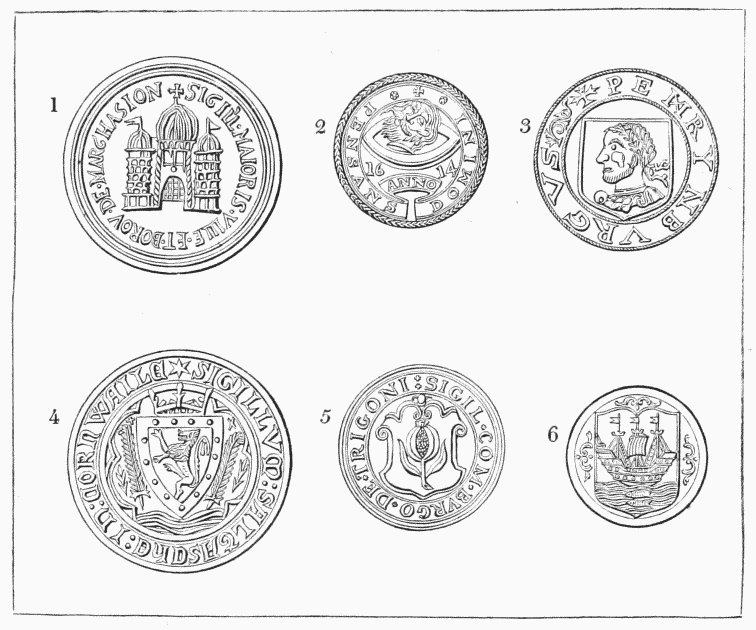Magna Britannia: Volume 3, Cornwall. Originally published by T Cadell and W Davies, London, 1814.
This free content was digitised by double rekeying. Public Domain.
Daniel Lysons, Samuel Lysons, 'General history: Market and borough towns and fairs', in Magna Britannia: Volume 3, Cornwall(London, 1814), British History Online https://prod.british-history.ac.uk/magna-britannia/vol3/xxxvi-xlii [accessed 23 April 2025].
Daniel Lysons, Samuel Lysons, 'General history: Market and borough towns and fairs', in Magna Britannia: Volume 3, Cornwall(London, 1814), British History Online, accessed April 23, 2025, https://prod.british-history.ac.uk/magna-britannia/vol3/xxxvi-xlii.
Daniel Lysons, Samuel Lysons. "General history: Market and borough towns and fairs". Magna Britannia: Volume 3, Cornwall. (London, 1814), British History Online. Web. 23 April 2025. https://prod.british-history.ac.uk/magna-britannia/vol3/xxxvi-xlii.
In this section
Market and Borough Towns.
This county returns forty-four members to parliament, two knights of the shire and forty-two burgesses, the borough-towns being twenty-one in number. "Cornwall," says Carew, "through the grace of its Earl, sendeth an equal if not a larger number of burgesses to any other shire. The boroughs so privileged, more of favour (as the case now standeth with many of them) than merit, are these following, Launceston," &c. (he omits Grampound and Penryn). However honourable this privilege may be esteemed, and whatever advantages may have been derived from it of later days, it appears that there have been times, and those not very remote, when the burden of maintaining their burgesses in London, during their attendance in parliament, was esteemed a grievance which was illcompensated by the honourable privilege of electing them. The following letter from Mr. Richard Edgcumbe (fn. n1), then one of the burgesses for Totness, to his constituents, written in the year 1565, seems to intimate that the customary fees or wages were not then paid with the greatest alacrity:—
"To the Right Worshipful the Mayor and Burgesses of Totness.
"After my most harty commendations: where I at my brothers request and for your sakes have been your burgess for the parliament to my no small coste, for myne expence were above twenty marks over and above the forty shillings (fn. n2) I received of you; and forasmuch as it is like the parliament will go forward at this time, which causeth me to call to mind the charge I took in hand, which with like charge should be prosecuted if otherwise I prevented not the same. These are therefore to require you either to bestowe the same upon some other, or else to allow me but the bare fee, which is two shillings a day, and as I have begun so will I end, God willing, to your contentation. Truly at this present season I have no occasion, as I know of, to travel up to London, which considered, I think it reason that I demand, and hope you will take it as very reasonably demanded. Thus trusting you will return an answer of your determination herein with convenient speed, I most hartily commit you to God.—From Mount Edgcumbe this 8th of September 1565. Yours to command,
"Richard Edgecomb. (fn. n3) "

Seals of Borough Towns, &c. 1.
1. The Seal of the Borough of Bodmin, representing a King sitting under a Gothic canopy, (being a bad imitation
of the ancient Seal, apparently of as early a date as the reign of King Henry III.) with this inscription, "Sigill.
comune Burgensium Bodminie."
2. The Seal of the Borough of Camelford, representing a camel passing through a ford of water, being the arms
of the town, with this inscription, "Sigillum vill: de Camillford."
3. The Seal of Falmouth, having a spread eagle with a castle on each wing, and a rock on its breast, inscribed
with only the name of the town.
4. The Seal of Fowey, having on a shield a ship of three masts on the sea, with top-sails furled, inscribed "Sigillum opidi de Fowey, anno Dom. 1702."
5. The Seal of the Borough of Grampound, representing a bridge of two arches on a river, on the centre of the
bridge an escutcheon of the arms of the family of Cornwall, viz. Arg. a lion rampant Gules, within a border Sa.
bezantie; inscribed, "Sigillum Majoris et Burgensium Burge de Grandpont als Ponsmur."
6. The Seal of the Borough of Helston, apparently as old as the fourteenth century; it contains a figure of
St. Michael holding a shield, charged with the arms of England, and standing between two towers, with this inscription, "Sigillum comunitatis Ville de Hellestone Burgth."

Seals of Borough Towns, &c. 2.
1. Seal of St. Ives, with a shield of the arms of the Borough, Arg. an ivy-branch overspreading the whole field,
Vert; with this inscription, "Sigillum Burgi S. Ives in Com. Cornub. 1690."
2. The Seal of Launceston, with a shield of the arms of the Borough: Gu. a triple circular tower within a border, Arg. charged with eight towers domed, Arg. without any inscription.
3. The Seal of Liskeard, containing a fleur de lys on which are two birds, with an amulet over the head of each,
and under the fleur de lys on each side a prince's feather, with this inscription, "Sigillum commune Burgi de
Liskeard."
4. The Seal of East-Looe, representing a one-mast vessel, with three escutcheons on the side, each charged
with three bendlets, (the arms of Bodrugan,) inscribed "Si Communetatis de Loo."
5. The Seal of West-Looe, having the figure of a man with a bow in his right hand, and an arrow in his left, with
this inscription, "Portuan otherwyse called Westlo."
6. The ancient Seal of Lostwithiel, appendant to a deed, dated 3 Hen. IV. representing a castle over a stream
of water, in which a fish is swimming, with this inscription, "S. Oficii de Maoor de Lostiel."
The modern Seal of Lostwithiel is a large one, having a shield with the same device as the ancient one, only
that the two objects on each side of the castle, which are not there very distinctly marked, are represented as
thistles, with this inscription, "Sigillum Burgi de Lostwithyel et Penknight in Cornubia, 1732."

Seals of Borough Towns, &c. 3.
1. Seal of Marazion, representing a castle, with this inscription, "Sigill' majoris Ville et Borov. de Marghasion."
2. The Seal of Penzance, having the figure of John the Baptist's head, with this inscription, "Pensans anno Domini 1614."
3. The Seal of Penryn, having a shield, on which is the bust of a man in profile, couped at the breast, vested
over the shoulder, and wreathed about the temples with laurel, tied behind with a ribbon flotant. Inscription,
"Penryn Burgus."
4. The Seal of Saltash, having a shield of the arms of the Borough. "On the base, water proper, in pale an
escutcheon Or, thereon a lion rampant Gules, within a border Sa. bezantie, ensigned with a prince's coronet of the
third, on each side the escutcheon an ostrich feather Ar. labelled Or." Inscription, "Sigillum Saltasche in Cornwaile."
5. The Seal of Tregony, with the arms of the Borough on a shield, a pomegranate seeded, slipped and leaved:
inscription, "Sigil. com. Burgo de Trigoni."
6. The Seal of Truro, with a shield of arms. "Gules, the base Barry-wavy of six Ar. et Az. thereon a ship of
three masts under sail, all Ar. on each mast, a banner of St. George, on the waves in base two fishes of the second."
This Seal has no inscription. A more ancient seal appears to have been inscribed "Sigillu. Communitatis de
Truro."
It appears that the custom of the boroughs maintaining their members (fn. n4), had not been discontinued in the early part of the last century; Hals, whose collections were brought down till about the year 1739, speaking of Helston, says, "this place, and many others in Cornwall, are not able to maintain their burgesses in London, during the sessions, at their own proper costs and charges (as old was accustomed), in any tolerable port or grandeur, but have found that profitable expedient (as many others) of making country-gentlemen free of their town, who bear the burden and heat of the day for them, and many times, for the honor of their corporations, distress their paternal estates, to exalt the reputation, and perpetuate the privileges of a petty society, made up of mechanics, tradesmen, and inferior practitioners of the law." The same kind of connection, probably, is still kept up in many instances, between country-gentlemen and the boroughs, though not exactly for the same purpose, since it is not so difficult now to find persons who will accept a seat in the House of Commons, without insisting on the payment of daily wages, during their attendance on parliament. It is said that Padstow, Lelant, and Marazion, formerly sent members to parliament, but were excused, upon their petition, on the score of poverty. We cannot find any records to confirm the tradition, but it is certain that Marazion elected two members for the parliament of 1658 (Thomas Westlake and Richard Myll), though it does not appear that they ever took their seat. The borough of Polruan sent a ship-owner to the council at Westminster, in the reign of Edward III. Seven of the present boroughs sent members to parliament in the reign of Edward I. — Launceston, Liskeard, Lostwithiel, Truro, Bodmin, Helston, and Tregony. The latter, after a long disuse of its privileges, was restored by Queen Elizabeth, in 1564. Saltash, Camelford, West-Looe, Grampound, Bossiny, Michel, and Newport, were first made parliamentary boroughs in the reign of Edward VI.; Penryn and St. Ives, in that of Queen Mary; and St. Germans, St. Mawes, East-Looe, Fowey, and Callington, by Queen Elizabeth.
Carew enumerates only eighteen market-towns in Cornwall; among these is Milbrook, the market at which place has long been discontinued; Bodmin and Launceston, he speaks of as the greatest. The following is a table of the present market-towns:—
| Market Towns. | Market Days. | Commodities. |
| St. Agnes | Thursday | Butchers'-meat, &c. |
| St. Austell | Friday | Corn, butchers'-meat, fish, and other provisions. |
| Bodmin | Saturday | Corn, butchers'-meat, fish, and other provisions. |
| Boscastle | Saturday | Butchers'-meat and vegetables. |
| Callington | Wednesday | Corn and provisions. |
| Camborne | Saturday (fn. n5) | Butchers' meat and other provisions. |
| Camelford | Friday | Corn and provisions. |
| St. Columb | Thursday | Corn and provisions. |
| (and Saturday in the summer) | Butchers'-meat, | |
| St. Day (fn. n6) | Saturday | Butchers'-meat and other provisions. |
| East-Looe | Saturday | Butchers'-meat and other provisions. |
| Falmouth | Tuesday, Thursday, and Saturday | Butchers'-meat, fish, and other provisions. |
| Fowey | Saturday | Butchers'-meat and provisions. |
| Grampound | Saturday | Butchers'-meat. |
| Helston | Saturday | Corn, provisions, &c. |
| St. Ives | Wednesday | Chiefly for vegetables. |
| Saturday | Corn and provisions. | |
| Launceston | Saturday | Corn and provisions. |
| Thursday | Only for butchers'-meat. | |
| Liskeard | Saturday | Corn and provisions of all kinds. |
| Lostwithiel | Friday | Corn and provisions (the corn is toll-free). |
| Marazion | Saturday | Butchers'-meat, fish, vegetables, &c. |
| St. Mawes | Friday | Butchers'-meat. |
| Mevagissey | Saturday | Butchers'-meat and other provisions. |
| Padstow | Saturday | Butchers'-meat and other provisions. |
| Penryn | Saturday | Butchers'-meat, fish, poultry and vegetables. |
| Penzance | Thursday and Saturday | Corn and provisions. |
| Polperro | Friday | Butchers'-meat. |
| Redruth | Tuesday and Friday | Corn and provisions (the latter is the principal market). |
| Saltash | Saturday | Almost disused. |
| Stratton | Tuesday | Corn and provisions. |
| Tregony | Saturday | Butchers'-meat and provisions. |
| Truro | Wednesday and Saturday | Butchers'-meat, fish, and other provisions. |
| Corn only on the Wednesday. | ||
The chief markets for corn are Launceston, Liskeard, Bodmin, St. Columb, Truro, Helston, and Penzance, but the corn-markets of Cornwall are much reduced, the principal farmers selling their corn in large quantities at home. The most considerable general markets are Redruth, Liskeard, and Penzance.
The ancient market granted to the Bishops of Exeter, to be held within their manor of Pawton, is still held, though now very inconsiderable, on Friday, at Wadebridge. There are provision-markets of late establishment, for the convenience of the populous mining districts, at Port-Isaac on Fridays, and at Heyle Copperhouse on Saturdays.
The following places had formerly charters for markets, which have been long ago disused; St. Burian, Cargol in Newlyn, Crofthole in Sheviock, St. Germans, Inceworth (held some time in Milbrook), Kilkhampton, Lawhitton, Modeshole or Michel, Mousehole in St. Paul, Polruan, Probus, Shepestall (fn. n7), and West-Looe or Port Pigham.
Fairs.
"Fayres," says Carew, "there are many;" he enumerates about thirty. The following is, we believe, a pretty accurate table of the fairs now held in the county:—
The largest cattle fairs are those of Bodmin (Whitsun fair), Grampound (June 11.), Probus (July 5.), Menheniot (June 11.), and Launceston (November 17.).